The Camden Valley Way today – abandoned El Caballo Blanco site redevelopment
The south-west Sydney suburb of Catherine Field down Camden Valley Way near Narellan is now hot property in today’s expanding real estate market. Housing developers have had their eyes on this suburb for some time, with big plans to transform the once semi-rural area into a vibrant new residential precinct. Sadly, in 2016 construction for new developer Sekisui House’s new planned community The Hermitage Gledswood Hills estate swallowed up the one of the last remaining abandoned attractions of Sydney’s yesteryear – the infamous secret Sydney attraction the El Caballo Blanco amusement park.
This promotional video by The Hermitage dated 7th Oct 2015 shows the once iconic entertainment venue is now part of their new residential development. I guess as that bloke in Muriel’s Wedding said ‘you can’t fight progress’.
I revisited the site in January 2016 to search for any evidence left of this magnificent place to find, well, not much…here’s a tour video of my visit, which features exclusive 2016 footage, photos from my urban exploration in 2013 and rare original vintage shots of the amazing Spanish dancing stallions in action.
My El Caballo Blanco memories
I consider myself lucky to have visited El Caballo Blanco during its glory days of the mid-80s, back when I was young and optimistic enough to believe that begging to get a pony for Xmas was an achievable goal. Having experienced the simple kinda life ‘Before Internet’ and being the huge nostalgia nerd I am, the hazy snapshots of my time spent at El Caballo Blanco seeing the dancing stallions are a fond memory.
Some 20 years later, I explored the abandoned ruins and photographed my adventure. This was around mid-2013, before it was claimed by the Gledswood Hills estate developers. The opportunity to document this lost Sydney attraction and research its history has been my most personally rewarding and bittersweet exploration to-date. I feel fortunate to have experienced it both as an amusement park and in its abandoned state, especially now it’s gone forever.
Sydney’s love affair with amusement parks
Sydney has a history of quaint local theme parks and recreational gardens dating back many decades. Today only Luna Park is still in operation, but dotted all around the outskirts of our city were once other well-known destinations. TV commercials for enchanting places like Magic Kingdom, Bullens Animal World, Paradise Gardens and Mt Druitt Waterworks promised entertainment, attractions and adventure for all ages.
The appeal of small amusement parks like El Caballo and its kind was their offer of an oasis-type escape that was both convenient and affordable. In previous generations, many people couldn’t afford the luxury or time for wide range travel options we enjoy today. Hence, day trip destinations that provided a relaxing outdoor retreat for parents and excitement for the kids all within an hour’s drive from Sydney CBD were a popular pastime.
But by the 90s, overseas travel and wider options for tourist options had increasingly become the norm and visiting local theme parks lost its novelty. Small operators like El Caballo Blanco and its kind couldn’t compete with large overseas franchises like Disneyland and more impressive interstate attractions like Warner Bros Movie World and Dreamworld in Queensland. Declining visitor numbers and occasional safety concerns led to financial issues and eventual closure of these once magical destinations.
This old TV commercial for El Caballo Blanco Sydney ran until up until it shut down in 1999 – the ad contains some great footage and shows a slice of 80’s style Sydney life!
The El Caballo Blanco legacy
The idea for El Caballo Blanco was created by Western Australian business entrepreneur Ray Williams, who first imported Spanish Andalusion horses into Australia in 1972. Williams had travelled the world for the past two years searching for a perfect horse breed to mix with Australian bloodlines. In 1971 he visited Jerez, Spain and was taken by their renowned Andalusian horse, favoured by European royalty over centuries for its intelligence and graceful dancing capabilities.
He purchased prize stallion ‘Bodeguero’ plus several mares, brought them back to his ranch in Wooroloo, WA and began the Bodeguero stud farm. Williams was inspired by the Spain’s tradition of the stallion’s dance and unique partnership between rider and dancing horses, so saw an opportunity to capitalise on his investment. He opened ‘El Caballo Blanco’ (meaning simply ‘The White Horse’) at the Wooroloo ranch in 1974, a Spanish-style holiday ranch with arena performances by the famous dancing stallions, featuring the star Bodeguero and other horses from the Bodeguero Stud.
The show gave an Australian audience a taste of an authentic European experience in a tourist resort setting and a chance to witness the beauty of these special horses. It proved to be such a quick success that by 1979 Williams expanded his operation to the East coast of Australia, overseeing the establishment of a 2nd El Caballo Blanco resort in Sydney, with entreprener Emmanuel Margolin.
He later launched a 3rd El Caballo Blanco park in Disneyland USA, securing his ambitious dreams of the brand’s global success.In fact, many of the Andalusians in Australia today can be traced back to that frisky ol’ Bodegeuro and his herd of fine fillies!

Original print advertisement for El Caballo Blanco – Sydney’s ‘premier attraction’
The glory days of El Caballo Blanco Sydney
Like its West coast original, the even larger Sydney version was a celebration of Spain’s rich history and tradition, right in the heart of the rural Macarthur region. It introduced Sydneysiders to the beauty and grace of the amazing Andalusians, with family-friendly and affordable tourist accomodation. The star attraction was of course the dancing stallions arena performances, featuring horses from the famed Bodeguero Stud, complemented by the hotel’s striking Spanish-style architecture and immaculately kept gardens.
The Sydney resort had several amusement rides including a miniature train ride, go-kart track, ornamental boating lake and waterslides. There was even an adjoining modest zoo called ‘Australiana Park’ that operated in conjunction with El Caballo Blanco. There also were other horse breeds, like dwarf Fallabella ponies and a grand Clydesdale horse-drawn carriage.

‘El Caballo Clydesdales’ – Photo © Facebook page ‘In memory of the beautiful horses of El Caballo Blanco & Notre Dame’
Dancing stallions, dazzling costumes & talented trainers
Elaborate dressage shows with traditional Spanish music were held several times daily and showcased 23 different dance steps – the most famous being the Pas De Deux, a synchronised dance between two horses. The fine costumes were imported from overseas and the performances were a stunning visual display, especially during that era.
The horse trainers coveted their roles and the opportunity to work with such a revered species was considered pretty prestigious. The staff developed close bonds with these intelligent creatures during performances, plus on a personal level as well. Click here to see a full length feature video of an original El Caballo Blanco performance recorded in its launch year 1974 – some incredible footage here of the majestic Andalusians and their talented trainers in action. Below is an original brochure that features some cool snapshots of the park’s attractions and some of the trainers in costume.
Closure and abandonment
After Williams’ death in the US, the three El Caballo Blanco parks struggled. An ageing attraction once full of European charm, had grown tacky and tired in appearance. As Sydney grew increasingly urbanised and cosmopolitan, pursuits like horse riding became a more niche interest. The Sydney venue couldn’t recover from the economic downturn, so the dancing stallion shows wound down and gradually ceased in 1999. It remained open some time after that for occasional equestrian events, hotel accommodation and wedding receptions.
Today only the Woorola resort remains, still partially open as a rather outdated looking hotel, restaurant and function centre. In 2013, Aussie blogger The Food Pornographer reviewed the Woorola resort and restaurant – this article is well worth a read, to get a sense of what Sydney’s El Caballo Blanco experience might’ve been like.
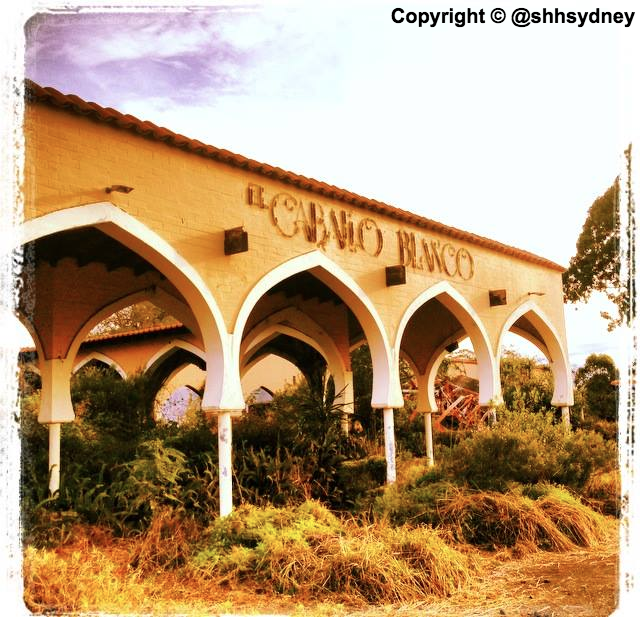
Spanish-style and name remains
Abandoned, but not forgotten
After the Sydney park’s closure, the Andalusions remained onsite for some years, cared for by a group of horse enthusiasts. Some were eventually sent back to the WA Bodeguero Stud, but apparently a few were kept Sydney and shown off at horse trade shows/country fairs, to fundraise for their expensive ongoing care. However, the exact whereabouts of the original group of performing stallions remains unknown. The people who took them on have reportedly been highly protective of their locations and any grave sites, so nothing definite could be found online – it seems the Andalusians are destined to remain as mysterious and magical as they always have been throughout history.
Left abandoned, the disused main arena building and stables were utilised as a warehouse to store carpets. Several infamous 90s bush raves were held there until 2007, when a fire destroyed most of those sections.
In August 2015, former trainers Esther Mckay and Shayn Spark confirmed their plans to co-author a book about El Caballo Blanco. Their story is set to bring the park back to life, through memories of Spark’s incredible time working with Andalusian stallions ‘Bizarro’ and ‘Razorback’. Spark says the arena shows were spectacular and the horses were a much-loved part of the Macarthur region’s history. Below is a Today Tonight feature story on Spark’s caretaking of the Andalusians on the old El Caballo Blanco property and ongoing horse rescue work. It’s lovely to see the horses happy in their retirement years 🙂
It’s not hard to believe this place is still considered important to Sydney people, when a recent post on the Macarthur Chronicle Facebook page about El Caballo Blanco reached over 7,000 likes, 900 comments and 800 shares – an impressive response that proves while this place may be lost forever, it hasn’t been completely forgotten.
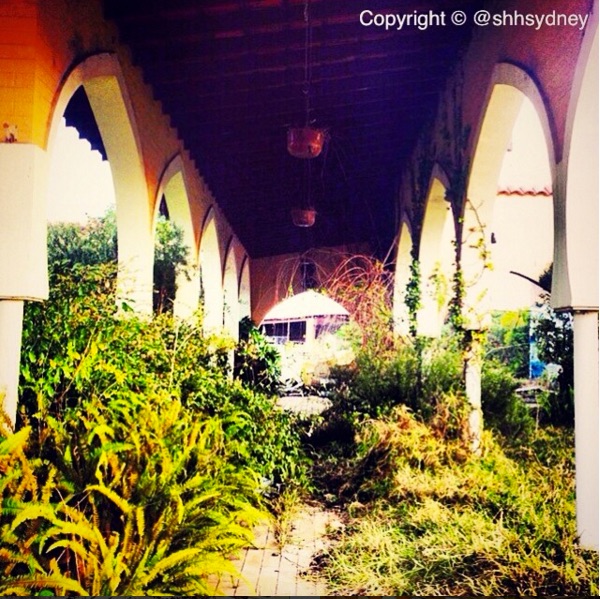
Nature overtakes archways
Urban exploration of El Caballo Blanco Sydney
Abandoned theme parks are well-known for supposed hauntings and giving generally spooky vibes. Slipping underneath a gap in the back fence next to the Camden Valley country club and golf course and cautiously entering the stables was a lot like crawling through a Narnia-esque wooden wardrobe and stepping into a completely different, not entirely safe feeling world – such hesitation is something every urban explorer has to face, but ultimately has to push through in order to make adventure times happen!
The stables and main performance arena were totally wrecked, having been gutted by the 2007 blaze and left in a derelict state. I was wary to approach too close to the unstable looking awning and the performance arena was full of broken glass, with once plush red stadium chairs thrown about by unknown bandits before me.
The hotel and resort buildings were thoroughly trashed, local louts have obviously spent some time here and graffiti artists have taken advantage of the walls, creating some nice pieces. The vandalism and destruction painted a gritty, urban topcoat over the still kitschy-cute 70s leisure resort.
Evidence of remaining Spanish-style architecture was everywhere – from the faded salmon pink facade of the buildings, to the motif of the gently curved archways echoed throughout the whole property. Now crumbling columns that still partially lined the hotel grounds would’ve once been a grand border around the beautifully tended gardens, left to grow wild and return to bush.
I proceeded with much much more caution around the waterside and the creepy old swamplands, which used to be the ornamental boating lake. The murky water was covered with a thick blanket of waterlilies and a tarry-looking layer of sludge. Having a pretty big water phobia, felt a strong sense of trepadition around the lake – so with anxiety levels rising, avoided it entirely. However, I did manage to get some snaps of a few old paddling boats, trashed outdoor pool and aptly named ‘Jack & Jill’ waterslide, which does indeed look like it could break a few necks and crowns.
Getting down to the go-kart race track meant shuffling through the overgrown paddock and avoiding heaps of horse muck along the way – it’s times like these am glad to be a Doc Martens girl! The track is situated closer to the roadside of the Camden Valley Way, so was well aware that motorists driving past could see me blatantly trespassing, whoops…
The loop was pretty petite in size, with chunks of grass pushing through any available cracks in the tarmac. There was no sign of any actual go-karts, but considering how many people have visited over the years of abandonment, it’s fair to say they’ve likely all been nicked – hopefully at least one’s been hoarded and saved as a souvenir. Was still nice to see the sign was still intact, with the old Peter’s Ice Cream sponsor logo.
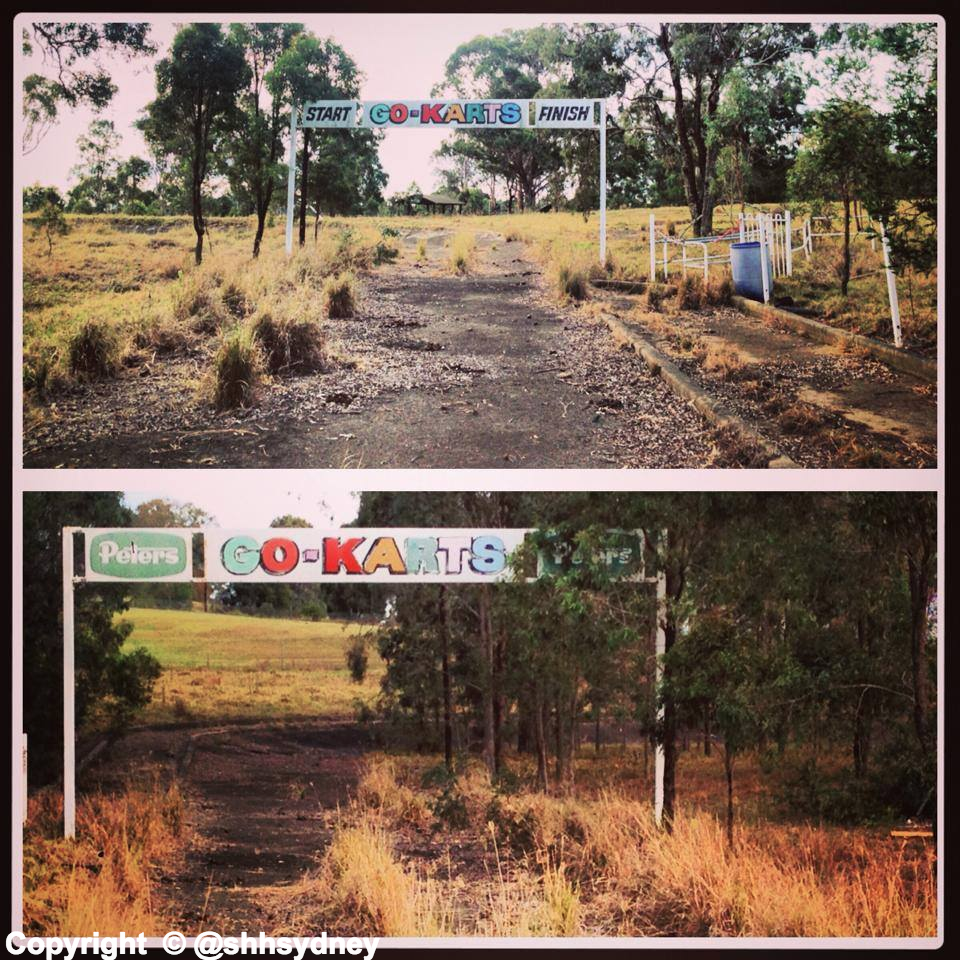
Go-kart race track lap
The original miniature railyway track did roughly a 1km loop around the amusement park, but only certain parts of the lines were still visible. Many sections had been either reclaimed by the grassland or removed entirely and the train was gone. Good news is the railway station structure, concrete platform and track line still remained, albeit now overgrown with tall weeds and encroaching grass shoots.

Abandoned railways, lost dreams
When approaching the canteen block, I immediately got a kick out of its groovy name ‘La Canteena’ and giggled out loud at yet another little nod to 70s Spanish flavour. The second thing that invited attention was a lovely mural along the side of the building with scenes of a train ride, a rearing Spanish stallion and waterslides – another awesome reminder that this was once a fun, vibrant place. Was pleased to see that apart from a few graffiti tags and wear over the decades, this artwork had been left untouched.
More old logos were inside La Canteena, this time Qantas on some plastic crates stacked up in a corner. I love old logos, they’re a wonderful timestamp of the past. There were also several huge hay bales strewn around La Canteena and its surrounds – you can spot one next to the train in the mural photo below.
Surprisingly, a large number of horses and a few stray and skinny looking cows were allowed to roam free on the partially demolished property, which explains those random hay bales about.
While research shows that none of the original Andalusians were still onsite by 2013, it was pretty easy to pretend that every white horse on the property were some of the famous Spanish dancing stallions. A local in the know later informed me this motley crew of horses actually belong to the riding school on the adjacent property, but still have no idea who those cows belonged to…
Below on the left is one the cows being creepy with me in the stables, standing next to some old carpets that must’ve survived the fire of 2007. To the right you can just spot three horses grazing outside the overgrown main arena building. In both shots are yet more archways, they’re seemingly everywhere.
A white horse appeared to be the pack leader and he (well, presumably a boy) didn’t hesitate to walk right up to me outside La Canteena. We faced off while the others curiously trailed behind him, until they eventually had me completely surrounded. Just then I remembered the rather bruised Pink Lady apple in my backpack, so slowly pulled it out and flat palmed, so no nipped fingers, presented it to him. He immediately devoured it and let me pat him for a bit. After that they walked around with me being adorably distracting, while I took snaps around the main arena and paddocks.
I was struck by an intense feeling of awe at this unexpected moment – it was a totally out of this world and emotional experience for this city chick to wander around an abandoned amusement park being followed by a herd of horses! Check out this short video clip I posted on my personal Instagram in 2013 of the gang curiously following me around while I took photos. The La Canteena wall mural is visible over in the far right background.
The Australiana Zoo section adjacent to El Caballo Blanco appeared to be basically part of the park, with no fence boundary between the two. It did have a more farm-type feel, in keeping with a more Aussie outback theme. There was a small Pizza-Hut looking farmhouse nestled amongst gum trees and palms, a huge wooden spiral aviary built around a large tree and various animal cages still around. Next to the zoo section was another paddock and outdoor stadium, with the bleacher seats still peeking through the grass.
The sun began to dip behind the horizon and dusk fell over the remains, the shadows made mystical and eerie place. I took in the landscape and committed the final scene to memory, with the knowledge that this special place was living on borrowed time and this really would be the last goodbye…
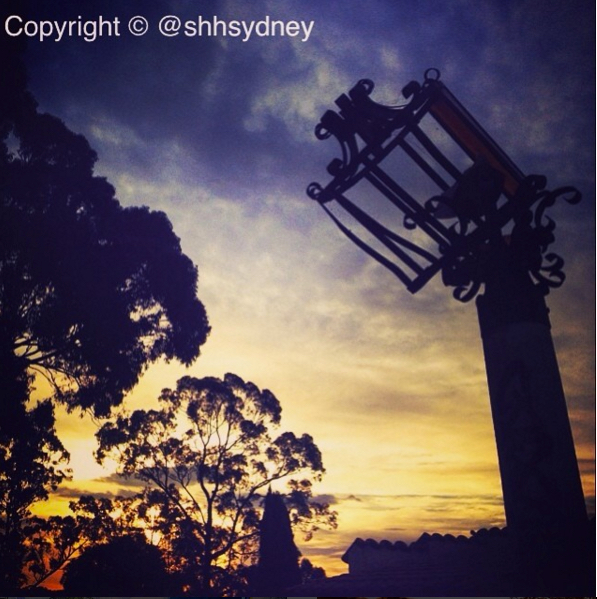
Dusk shadows
Final thoughts on El Caballo Blanco
While Sydney’s growing population understandably requires vast improvements in housing and infrastructure, it’s disappointing to see to see no mention of El Caballo Blanco in the history section of The Hermitage website. Developer Sekisui House and Camden Council have no plans to commemorate the park in any way. It will sting just a bit cruising down Camden Valley Way through the waves of new suburbia and seeing the new Gledswood Hills estate where El Caballo Blanco once was.
Will leave you with just some of the few fantastic photos from the appropriately named Facebook page ‘In memory of the beautiful horses of El Caballo Blanco and Notre Dame’. Hopefully the majestic Spanish dancing stallions of south-west Sydney will not be forgotten in our time.
xo Gia


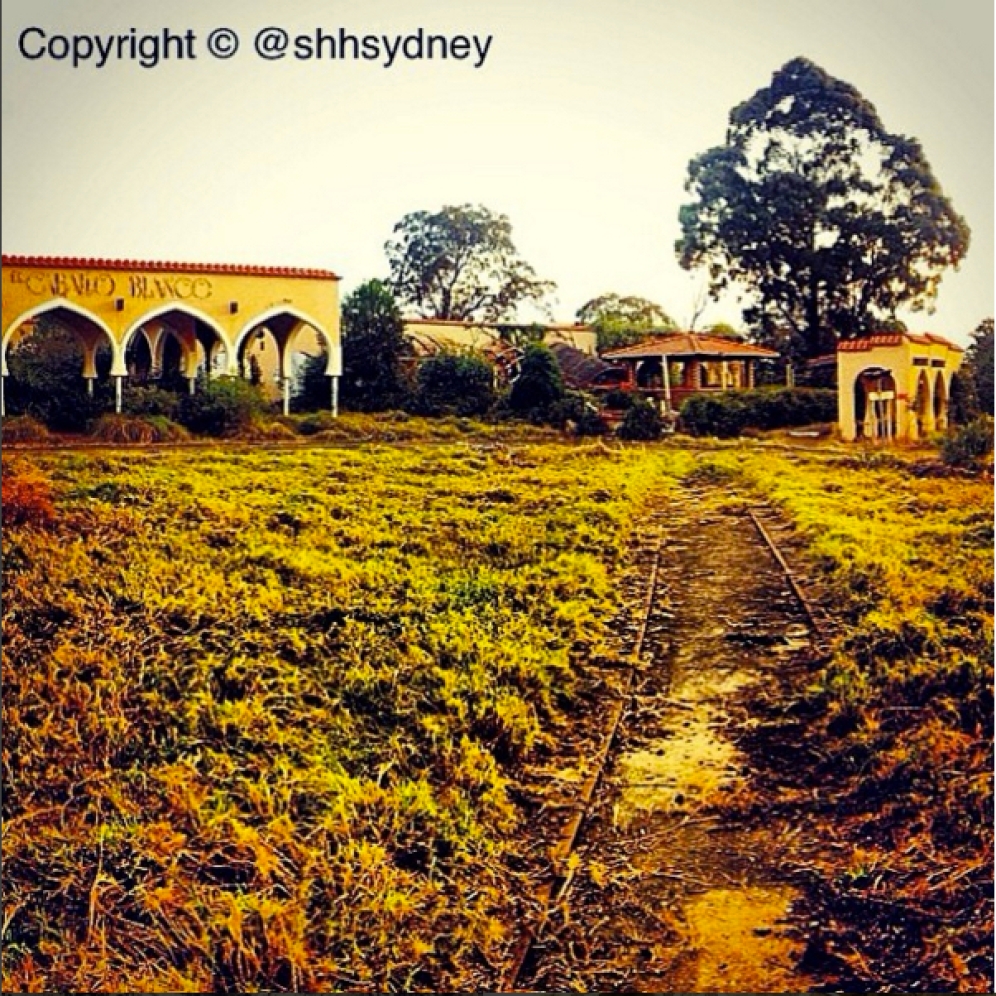







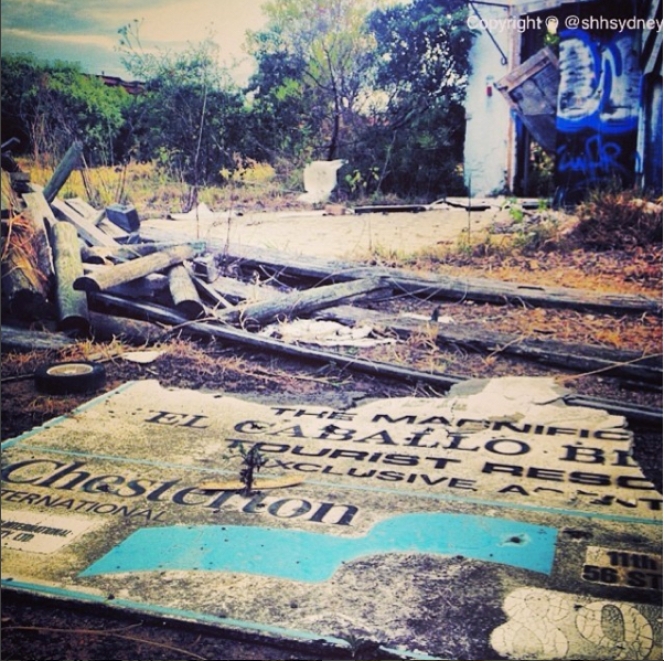









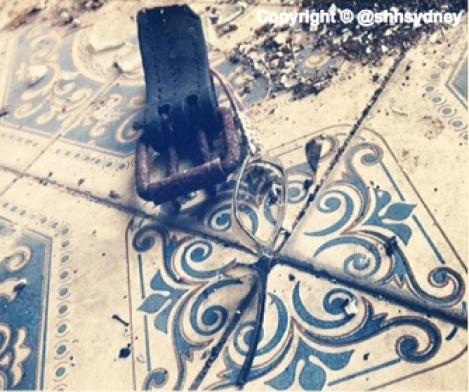








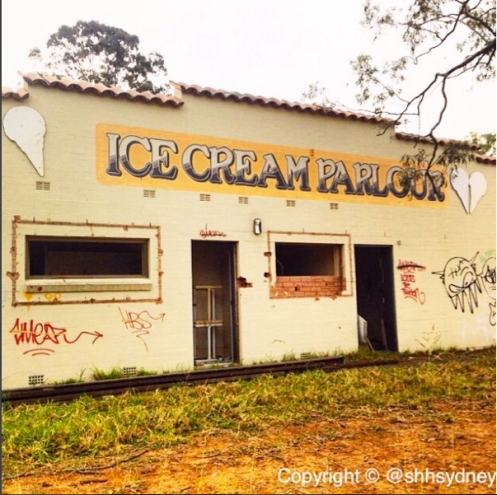



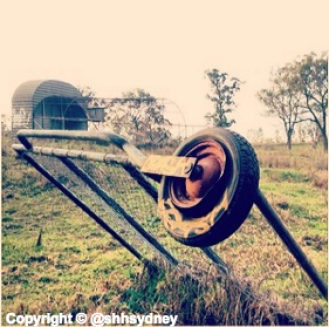










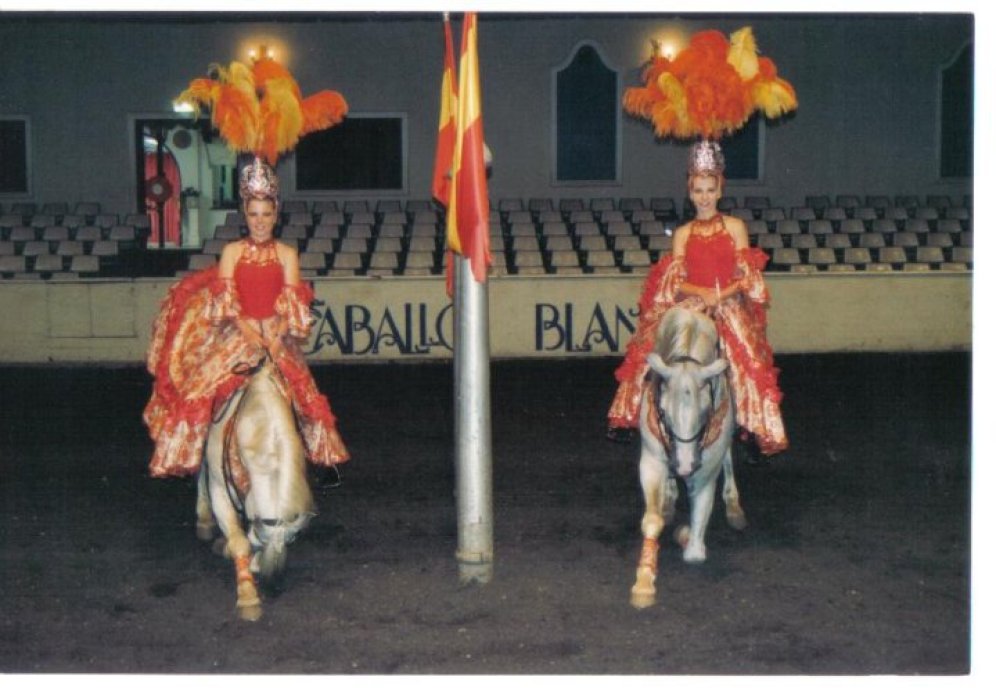
Fantastic photos and great writing – well worth the read – thank you
LikeLiked by 1 person
Great story and thanks for the memories
LikeLiked by 1 person
I remember going to El Caballo Blanco as a kid , dad worked for the railways and they had their annual Christmas Party out there , so much fun had there , we also visited before they closed it down , the zoo side of it then was dwindling in animals , but still a lot of fun for my niece and nephew , it’s a shame it has come to an end but a least we have a few pics from back when we visited and memories of fun days , thanks for your editorial a very interesting read taking me back to good times , Thanks Narelle
LikeLiked by 1 person
Mine worked on the railways too. That was a great picnic.
LikeLiked by 1 person
Great article and photos. Thanks so much for writing and sharing.
LikeLiked by 1 person
Would be nice if the new developers could incorporate the sign in their designs just for history sake. Hopefully they think of this.
LikeLiked by 1 person
Yes a plaque and small statue of a stallion would be perfect!
LikeLike
Loved reading this, I remember it well and some of the people that worked there.
LikeLiked by 1 person
Cheers! What an amazing and unique experience working there must’ve been. There is a Facebook group for ex-workers, who still love sharing their stories from the glory days of El Caballo Blanco.
LikeLike
Great article and great pictures – I just wish you didn’t use any filters, would be more authentic then.
LikeLike
Memory is a filter, I think they suit the subject well 🙂
LikeLiked by 1 person
but instagram filters are so much fun! Guess am more an explorer and definitely no photographer…I use filters to capture the mood of the moment, but will keep YouTube videos unfiltered and realistic.
LikeLike
Fantastic article, I’d never heard of this place, but had heard of Magic Kingdom. Hopefully the history of the park is preserved in some small way! Can’t wait to see more posts from you =)
LikeLiked by 1 person
Cheers lady! Here’s hoping…
PS. Hang tight for Magic Kingdom 😉
LikeLike
Growing up in Wollongong, I remember traveling in a coach there that were run regularly. But this would have been about 1982. Just mum & I. What a great story & photo’s. Thank you.
LikeLiked by 1 person
Cool to hear there was a coach that went there…Wollongong is known for good exploring too 🙂
LikeLike
Maybe the developers could name a few streets after this once prized attraction. I can still remember the TV ads and the tune. Such a shame the condition is in and thanks for recording the memories.
LikeLiked by 1 person
That’s a really good idea! Bodeguero Boulevard would make a mad street sign.
LikeLike